Jul
29
2022
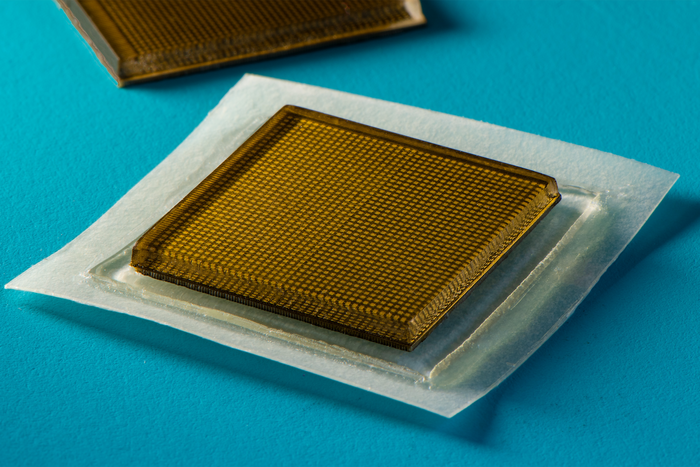 It’s easy to take for granted today the revolution in non-invasive medicine over the last century. Prior to the 20th century there was no blood testing to monitor health or diagnose disease. The first clinical use of X-rays was in 1896. The only way to peer into the body prior to that was with auscultation – listening to the sound various organs made, like heart sounds, the lungs breathing, and bowel sounds. Substances that came out of the body could also be examined. A physical examine could sometimes feel what was under the skin, not but deep or beneath bones. There was essentially very little that could be done to non-invasively examine what was happening inside the body. Surgery was the last resort – you had to open up the body and look inside if you needed to see.
It’s easy to take for granted today the revolution in non-invasive medicine over the last century. Prior to the 20th century there was no blood testing to monitor health or diagnose disease. The first clinical use of X-rays was in 1896. The only way to peer into the body prior to that was with auscultation – listening to the sound various organs made, like heart sounds, the lungs breathing, and bowel sounds. Substances that came out of the body could also be examined. A physical examine could sometimes feel what was under the skin, not but deep or beneath bones. There was essentially very little that could be done to non-invasively examine what was happening inside the body. Surgery was the last resort – you had to open up the body and look inside if you needed to see.
Today modern medicine has a long list of options, including using X-rays, magnetic fields, electrical signals, ultrasound, radioisotopes, and tiny cameras to non-invasively or minimally invasively look inside the body. This is all in the last century, a tiny slice of human history. We are also still on the steep part of the curve in terms of increasing our ability to diagnose and treat disease non-invasively. There are frequent incremental advances in the various technologies, and they are adding up over time.
One such incremental advance, which may expand the utility of an entire diagnostic technology, is wearable ultrasound. Ultrasound uses high frequency sound which is projected into the body, usually with a small hand-held probe which is pushed against the skin through a conducting gel. These sound waves bounce back and are picked up by the probe, which sends the information to a computer to construct an image. Anyone in a developed nation who has had a child since 1956 when the technology was first developed is likely familiar with this. Ultrasound is safe, minimally invasive, and can provide a wealth of useful data. It can examine more than fetuses, but can also look at heart function with sufficient detail to detect how the valves are working. It can examine blood vessels to look for clots, or to see if they are open and how they react to stimuli. Ultrasound can be used to look at other organs, to detect cysts or tumors, and to examine the lungs.
Continue Reading »
Jul
26
2022
 It should come as a surprise to no one that the fossil fuel industry has been financing a vast public relations campaign over the last three decades to sow confusion and doubt about human-caused climate change. This is already well established. One Harvard study, for example, focusing on ExxonMobil, found:
It should come as a surprise to no one that the fossil fuel industry has been financing a vast public relations campaign over the last three decades to sow confusion and doubt about human-caused climate change. This is already well established. One Harvard study, for example, focusing on ExxonMobil, found:
That analysis showed that ExxonMobil misled the public about basic climate science and its implications. They did so by contributing quietly to climate science, and loudly to promoting doubt about that science.
Now, the BBC reports on two people who worked with a PR firm specifically to deny the science of climate change who are now telling their story, adding some more details and focus to the tale. Don Rheem and Terry Yosie worked for E Bruce Harrison, an industry PR guru, who, starting in 1992, landed the campaign to work for the Global Climate Coalition (GCC), an industry group comprised of oil, coal, auto, utilities, steel, and rail industries. What do all these industries have in common? They all contribute significantly to green house gas emissions. And why 1992? Because that is the year of the election that would replace an oil-friendly president with one more friendly to environmental causes, and with a vice president who was a climate change activist. The handwriting was on the wall.
And Harrison had a vision – he had honed his tactics fighting auto industry regulations and spreading doubts about the harms of smoking for the tobacco industry. He recruited a team and made climate change denial his primary focus. The tactics his firm used for the GCC were largely the same – they put out constant opinion pieces, background pieces for journalists, and paid advertising emphasizing doubt about climate science. For example, in a 1994 booklet they claimed:
The greenhouse effect is a natural phenomenon produced by naturally occurring atmospheric gases. To date, there is no evidence to demonstrate the climate has changed as a result of any “enhancement” to this natural phenomenon by man-made greenhouse gases.
Continue Reading »
Jul
25
2022
 We are still relatively early in the investigation of possible fraud or misconduct relating specifically to amyloid beta (Aβ) in Alzheimer’s disease, so consider this all preliminary. However, independent analysis does allegedly find some highly suspect data in a series of images used in publications by one particular researcher, Sylvain Lesné of the University of Minnesota. Science magazine has done a good review of what we know at this time. I will quickly review the status of this investigation and what the whole episode means for scientific research in general, and Alzheimer’s research in particular.
We are still relatively early in the investigation of possible fraud or misconduct relating specifically to amyloid beta (Aβ) in Alzheimer’s disease, so consider this all preliminary. However, independent analysis does allegedly find some highly suspect data in a series of images used in publications by one particular researcher, Sylvain Lesné of the University of Minnesota. Science magazine has done a good review of what we know at this time. I will quickly review the status of this investigation and what the whole episode means for scientific research in general, and Alzheimer’s research in particular.
For background, Alzheimer’s disease (AD) is a complex neurodegenerative disease and the major cause of dementia, a chronic loss of global cognitive function, especially memory. AD has been extremely frustrating from a scientific and medical point of view. While there is a great deal of research and it has made impressive progress in understanding the pathophysiology of the disease, we remain without a single coherent “smoking gun” cause of the disease. The problem is (as with other neurodegenerative diseases) that there is a lot happening when brain cells age and die. The trick has been to not only identify markers of AD in the brain, but to understand what role those markers play in the disease. Specifically, are they driving the disease, or are they just a consequence of it?
In medicine there are two main ways to test a causal hypothesis for a correlational marker – can we transfer the disease by transferring the marker, and can we cure the disease by treating the marker? That last question is the ultimate goal of medical research, to find a cure, or at least a disease-modifying treatment. If we can prevent, slow down, stop the progression, or even reverse AD by interfering with one aspect of the disease, then that aspect is likely what’s driving it. But also – we have effective treatments, and everyone is happy.
This is where AD research gets very frustrating. Despite having many pathological clues to follow, researchers have been unable to close the loop – to find a disease-modifying treatment based on our basic science knowledge of AD. This leads to a lot of head-scratching and debate – is AD caused many by the build up of toxic proteins, by impaired neuronal function, by inflammation, or something else? One of the prominent theories of AD is that a major contributor to the disease is a build up of toxic protein, specifically amyloid beta (Aβ). But the Aβ theory has not led to a cure, which has led to many Aβ skeptics in the Alzheimer’s research community.
Continue Reading »
Jul
22
2022
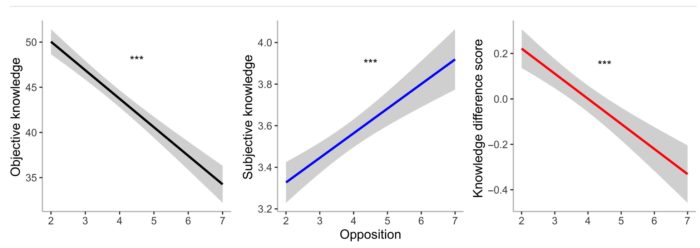 There has been a lot of research exploring the phenomenon of rejection of established science, even to the point of people believing demonstrably absurd things. This is a complex phenomenon, involving conspiracy thinking, scientific illiteracy, group identity, polarization, cognitive styles, and media ecosystems, but the research has made significant progress unpacking these various contributing factors. A recent study adds to the list, focusing on the rejection of scientific consensus.
There has been a lot of research exploring the phenomenon of rejection of established science, even to the point of people believing demonstrably absurd things. This is a complex phenomenon, involving conspiracy thinking, scientific illiteracy, group identity, polarization, cognitive styles, and media ecosystems, but the research has made significant progress unpacking these various contributing factors. A recent study adds to the list, focusing on the rejection of scientific consensus.
For most people, unless you are an expert in a relevant field, a good first approximation of what is most likely to be true is to understand and follow the consensus of expert scientific opinion. This is just probability – people who have an understanding of a topic that is orders of magnitude beyond yours are simply more likely to have an accurate opinion on that topic than you do. This does not mean experts are always right, or that there is no role for minority opinions. It mostly means that non-experts need to have an appropriate level of humility, and at least a basic understanding of the depth of knowledge that exists. I always invite people to consider the topic they know the best, and consider the level of knowledge of the average non-expert. Well, you are that non-expert on every other topic.
This is also why humility is the cornerstone of good scientific skepticism and critical thinking. We are all struggling to be just a little less wrong. As a science enthusiast we are trying to understanding a topic at a generally superficial technical level. This can still be a very meaningful and generally accurate understanding – just not technically deep or rigorous. It’s one thing to say – yeah, I get the basic concept of quantum computers, how they work, and why they can be so powerful. It’s another to be able to read and understand the technical literature, let alone contribute to it. Often people get into trouble when they confuse their lay understanding of a topic for a deep expert understanding, usually resulting in them becoming cranks.
Continue Reading »
Jul
21
2022
 The most frustrating aspect of the global warming saga is that we actually have much of the technology we would need to massively decarbonize our industries. All we have to do is do it. But we lack the political to do what is necessary. It wouldn’t even require any huge sacrifice (as the naysayers falsely claim), at least not on the part of the general public. We would definitely need some creative destruction in various industries, but nothing significantly different than the background turnover that already is happening due to technological advance.
The most frustrating aspect of the global warming saga is that we actually have much of the technology we would need to massively decarbonize our industries. All we have to do is do it. But we lack the political to do what is necessary. It wouldn’t even require any huge sacrifice (as the naysayers falsely claim), at least not on the part of the general public. We would definitely need some creative destruction in various industries, but nothing significantly different than the background turnover that already is happening due to technological advance.
The transportation sector is largely solved. Battery electric vehicles (BEVs) are accessible, more than functional enough, and in most cases cheaper over their lifetime than internal combustion engine (ICE) vehicles. Investing in some infrastructure, and tweaking incentives is enough to significantly accelerate the turnover from ICE to BEV. Like many things, the first 60-80% should be easy, and there will be increasing challenges to get the last 10-20% or so, but 80% is enough to significantly reduce the carbon footprint of transportation. We can worry about that last 20% in 20-30 years.
The energy sector is also solved (technologically speaking). Between wind, solar, nuclear, geothermal, and hydroelectric we can provide all the electricity we need, and cover growing electricity needs into the future. Again, we just have to do it.
I want to discuss a few recent technological developments that show we are also making progress in decarbonizing other sectors.
Continue Reading »
Jul
19
2022
 Europe is experiencing an extreme heat wave, with the UK set to reach the highest temperatures ever recorded there in the 363 years it has been keeping records. The current hottest temperature recorded in the UK was in 2019 at 38.7 C. The top ten hottest years have all been since 2002. Now the UK is predicted to hit 40-41 C in the current heat wave, and have already hit 37.5 C.
Europe is experiencing an extreme heat wave, with the UK set to reach the highest temperatures ever recorded there in the 363 years it has been keeping records. The current hottest temperature recorded in the UK was in 2019 at 38.7 C. The top ten hottest years have all been since 2002. Now the UK is predicted to hit 40-41 C in the current heat wave, and have already hit 37.5 C.
This should come as a surprise to exactly no one. Of course, weather is not climate, and heat waves happen. No one heat wave is evidence of climate change, the same way a cold day in December is not evidence that the planet is not warming. We have to look at global temperatures in aggregate, but also global warming does increase the probability of things like heat waves, droughts, and fires, and how extreme they are. There are also separate reasons why Europe in particular is seeing extreme heat waves, but this only explains why Europe is especially vulnerable, not why the heat waves are happening at all.
Science is also confirmed by how well it makes predictions. If we go back 20 years, the climate change denial community was claiming that global warming had “paused”. They used this claim to bolster their bigger claim that climate change was not happening at all, that we were just looking at a natural variability in climate that was regressing to the mean. The next 20 years, they predicted, would see a return to more historically average temperatures. Meanwhile, scientists were predicting that global warming trends would continue. They predicted that the next 20 years would see increasing average temperatures, more hottest years on record, more heat waves and droughts.
Continue Reading »
Jul
18
2022
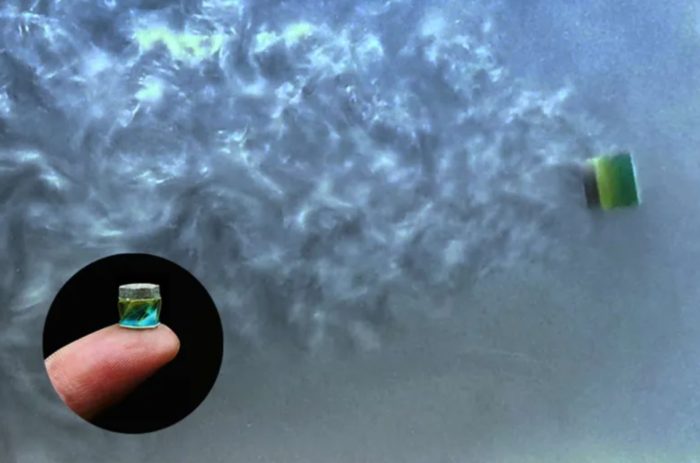 It is a frustrating reality that much of the cool technology we read about today will not be ready for widespread use for another 20-30 years. And of course not all such technology will pan out – but even when there is a high confidence level that they will, it will likely be decades before they change our lives. The cool technology I read about in popular science magazines in the 1980s didn’t really hit until the 2000s, and the advanced medical technology I learned about in medical school in the early 1990s didn’t mature until recently. So keep that in mind as I discuss this incremental advance in medical millirobots.
It is a frustrating reality that much of the cool technology we read about today will not be ready for widespread use for another 20-30 years. And of course not all such technology will pan out – but even when there is a high confidence level that they will, it will likely be decades before they change our lives. The cool technology I read about in popular science magazines in the 1980s didn’t really hit until the 2000s, and the advanced medical technology I learned about in medical school in the early 1990s didn’t mature until recently. So keep that in mind as I discuss this incremental advance in medical millirobots.
A millirobot is literally a millimeter size robot. The challenge of designing robots this small is to pack into that small size significant functionality. One method of getting such small robots to do stuff is origami technology – the robots can change their shape by folding and unfolding. Shape changing can accomplish specific tasks, such as locomotion, or package delivery. The advance here is to allow the millirobot to perform several tasks at once with the same origami feature, therefore packing more functionality into a tiny space.
Here we report a magnetically actuated amphibious origami millirobot that integrates capabilities of spinning-enabled multimodal locomotion, delivery of liquid medicine, and cargo transportation with wireless operation.
These tiny robots can therefore be controlled wirelessly. Further they can move both through liquid and over solid surfaces. And finally, the shape changing can deliver a liquid to a target destination. All of this is accomplished with the same origami feature, allowing for increased function while maintaining a small size.
Continue Reading »
Jul
12
2022
 By now you have probably gotten the memo – the world is drowning in plastic, and yet we continue to produce and throw away prodigious amounts every year. The world produces over 400 million tonnes of plastic every year. Only about 9% gets recycled. About 10% ends up in the ocean. This plastic hangs around for along time. It does not biodegrade, but it down break down into smaller and smaller pieces, ending up as microplastics. Microplastic are everywhere, from the deepest ocean to the highest mountain, and in most living things, including people. This is simply not sustainable.
By now you have probably gotten the memo – the world is drowning in plastic, and yet we continue to produce and throw away prodigious amounts every year. The world produces over 400 million tonnes of plastic every year. Only about 9% gets recycled. About 10% ends up in the ocean. This plastic hangs around for along time. It does not biodegrade, but it down break down into smaller and smaller pieces, ending up as microplastics. Microplastic are everywhere, from the deepest ocean to the highest mountain, and in most living things, including people. This is simply not sustainable.
A recent UK study, The Big Plastic Count, reinforces these numbers. They found that the average UK household throws away 66 pieces of plastic each week. In total the UK throws out 100 billion pieces of plastic a year. Only 12% of plastic in the UK is recycled. One of the primary lessons of this study is that recycling plastic does not work. It’s essentially a failed strategy for dealing with the plastic waste problem, and many consider the entire idea of recycling plastic to be an industry deception, “greenwashing” the problem.
This is part of a larger trend. Industries have historically figured out ways of shifting the responsibility for the waste they produce (or other problems they create) onto the public. This is a method of externalizing costs. In fact, the entire anti-litter campaign was created by a consortium of industry groups in order to divert attention away from their waste streams and serious regulations to deal with it. Remember the crying American Indian? That was industry propaganda.
As a general rule it is difficult to address any problem by counting on high public compliance. It’s just really hard to get most people to do something consistently, especially something tedious. This, of course, doesn’t mean that we don’t try to get people to express personal responsibility, for themselves, their environment, and for their society. You should brush your teeth regularly, using fluoride toothpaste and a soft brush, but probably not right after drinking acidic juice because that weakens the enamel, and make sure that you do a thorough job and floss occasionally as well. But this doesn’t mean that everyone is going to do this, no matter how hard we try to make it happen, and it doesn’t mean we don’t need to regulate the amount of fluoride in the public water supply to further promote dental health.
Continue Reading »
Jul
11
2022
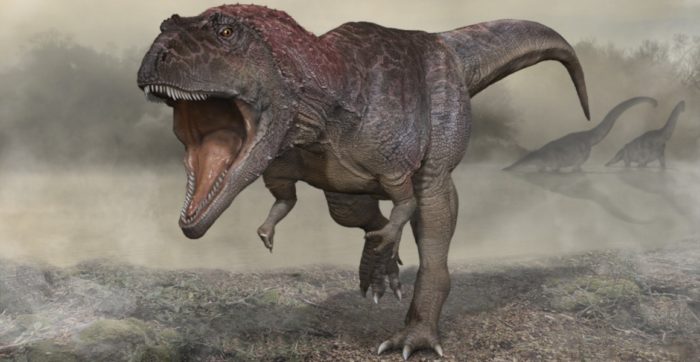 The arms of a T-rex are iconic for several reasons. First, they are comically small. T. rex itself is a superstar of the dinosaur world – perhaps the most famous extinct predator. Its jaws are massive and terrifying. Yet just behind those killer teeth there are these tiny arms that seem out of proportion, and scientists struggle to figure out what they are for and why they are so small. In fact, when the first T. rex skeleton was discovered by Barnum Brown in 1902 he did not think the arms were part of the same skeleton, they were just too small. The mystery of the T. rex’s arms remains an enduring scientific question.
The arms of a T-rex are iconic for several reasons. First, they are comically small. T. rex itself is a superstar of the dinosaur world – perhaps the most famous extinct predator. Its jaws are massive and terrifying. Yet just behind those killer teeth there are these tiny arms that seem out of proportion, and scientists struggle to figure out what they are for and why they are so small. In fact, when the first T. rex skeleton was discovered by Barnum Brown in 1902 he did not think the arms were part of the same skeleton, they were just too small. The mystery of the T. rex’s arms remains an enduring scientific question.
There are, in fact, three groups of dinosaurs that are typified by very large heads and jaws and tiny forelimbs, the tyrannosaurids, the carcharodontosaurids, and the abelisaurids. Also, the ancestors of the tyrannosaurids had longer arms, and it appears that these three groups of theropod dinosaurs did not share a common short-armed predecessor. Therefore this feature of tiny arms seems to have evolved independently in the three groups. This deepens the mystery. T. rex is not some quirky evolutionary one-off. This was a trend in the large theropods, which strengthens the conclusion that there was a clear evolutionary pressure for this morphology.
The debate over T. rex’s tiny arms comes up every time a new relevant discovery is made, and a recent discovery of a carcharodontosaurid is no exception. The fossil is of a new species, named Meraxes gigas (yes, after one of the dragons in Game of Thrones). Most importantly, it has small forearms, confirming that this lineage also had this strange feature. So what, then is the reason for the tiny arms?
The short answer is that we don’t know, mostly because we cannot observe the behavior of these animals to see how they use them. Also, evolution can be tricky, and we cannot always determine a single use for a feature or cause for its form. Often there is a complex web of reinforcing factors. But here are the main contenders for possibly relevant factors. Evolutionary pressure can come in several forms. One is to avoid a detriment, another is because the feature has a specific use, and a third is sexual selection (a product of the choice of mates). In the case of the reduced forelimbs, focus has primarily been on the first two factors.
Continue Reading »
Jul
05
2022
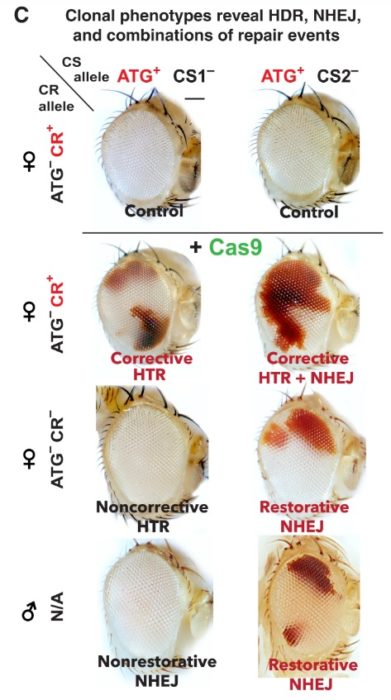 The technology of CRISPR (clustered regularly interspaced short palindromic repeat) continues to advance as a rapid pace. A recent study, Cas9/Nickase-induced allelic conversion by homologous chromosome-templated repair in Drosophila somatic cells, provides the potential for a new method of treating certain kinds of genetic diseases. This approach also appears to be safer, with fewer off-site genetic changes, but still has to be tested in humans.
The technology of CRISPR (clustered regularly interspaced short palindromic repeat) continues to advance as a rapid pace. A recent study, Cas9/Nickase-induced allelic conversion by homologous chromosome-templated repair in Drosophila somatic cells, provides the potential for a new method of treating certain kinds of genetic diseases. This approach also appears to be safer, with fewer off-site genetic changes, but still has to be tested in humans.
CRISPR works by pairing it with a guide RNA (gRNA) that targets a specific sequence in the DNA, and with a Cas9 endonuclease which will cleave the DNA at the target site. The normal DNA repair machinery will then fix the cut, but there are two basic pathways for this to happen. The first pathway (nonhomologous end joining – NHEJ) blindly reconnects the ends together, creating the potential for the introduction of random mutations at the repair site. This is considered an error-prone repair pathway. The other pathway is homology-directed repair (HDR), which uses the other copy of the DNA as a template, and is therefore much less prone to error. Remember, every cell has two of every somatic chromosome, one from each parent, and therefore two copies of every gene.
The researchers in the current study wanted to know if the HDR pathway could be exploited to not only repair the cleaved DNA but also to make the repaired copy of the gene look like the other copy, the “homologous” gene. Some genetic conditions or traits are dominant and others recessive. A dominant trait will manifest if an organism has only one copy of that trait, which a recessive trait requires that both copies of the gene have the trait. The classic example is eye color (this is an oversimplifcation, but demonstrates the point). Brown eye color is the dominant allele (gene version), while blue is recessive. A person with one brown and one blue allele will have brown eyes (dominant). You need two blue alleles to have blue eyes (recessive).
Continue Reading »
 It’s easy to take for granted today the revolution in non-invasive medicine over the last century. Prior to the 20th century there was no blood testing to monitor health or diagnose disease. The first clinical use of X-rays was in 1896. The only way to peer into the body prior to that was with auscultation – listening to the sound various organs made, like heart sounds, the lungs breathing, and bowel sounds. Substances that came out of the body could also be examined. A physical examine could sometimes feel what was under the skin, not but deep or beneath bones. There was essentially very little that could be done to non-invasively examine what was happening inside the body. Surgery was the last resort – you had to open up the body and look inside if you needed to see.
It’s easy to take for granted today the revolution in non-invasive medicine over the last century. Prior to the 20th century there was no blood testing to monitor health or diagnose disease. The first clinical use of X-rays was in 1896. The only way to peer into the body prior to that was with auscultation – listening to the sound various organs made, like heart sounds, the lungs breathing, and bowel sounds. Substances that came out of the body could also be examined. A physical examine could sometimes feel what was under the skin, not but deep or beneath bones. There was essentially very little that could be done to non-invasively examine what was happening inside the body. Surgery was the last resort – you had to open up the body and look inside if you needed to see.
 It should come as a surprise to no one that the fossil fuel industry has been financing a vast public relations campaign over the last three decades to sow confusion and doubt about human-caused climate change. This is already well established.
It should come as a surprise to no one that the fossil fuel industry has been financing a vast public relations campaign over the last three decades to sow confusion and doubt about human-caused climate change. This is already well established.  We are still relatively early in the investigation of possible fraud or misconduct relating specifically to amyloid beta (Aβ) in Alzheimer’s disease, so consider this all preliminary. However, independent analysis does allegedly find some highly suspect data in a series of images used in publications by one particular researcher, Sylvain Lesné of the University of Minnesota.
We are still relatively early in the investigation of possible fraud or misconduct relating specifically to amyloid beta (Aβ) in Alzheimer’s disease, so consider this all preliminary. However, independent analysis does allegedly find some highly suspect data in a series of images used in publications by one particular researcher, Sylvain Lesné of the University of Minnesota.  There has been a lot of research exploring the phenomenon of rejection of established science, even to the point of people believing demonstrably absurd things. This is a complex phenomenon, involving conspiracy thinking, scientific illiteracy, group identity, polarization, cognitive styles, and media ecosystems, but the research has made significant progress unpacking these various contributing factors. A recent study adds to the list, focusing on the rejection of scientific consensus.
There has been a lot of research exploring the phenomenon of rejection of established science, even to the point of people believing demonstrably absurd things. This is a complex phenomenon, involving conspiracy thinking, scientific illiteracy, group identity, polarization, cognitive styles, and media ecosystems, but the research has made significant progress unpacking these various contributing factors. A recent study adds to the list, focusing on the rejection of scientific consensus. The most frustrating aspect of the global warming saga is that we actually have much of the technology we would need to massively decarbonize our industries. All we have to do is do it. But we lack the political to do what is necessary. It wouldn’t even require any huge sacrifice (as the naysayers falsely claim), at least not on the part of the general public. We would definitely need some creative destruction in various industries, but nothing significantly different than the background turnover that already is happening due to technological advance.
The most frustrating aspect of the global warming saga is that we actually have much of the technology we would need to massively decarbonize our industries. All we have to do is do it. But we lack the political to do what is necessary. It wouldn’t even require any huge sacrifice (as the naysayers falsely claim), at least not on the part of the general public. We would definitely need some creative destruction in various industries, but nothing significantly different than the background turnover that already is happening due to technological advance. Europe is experiencing an extreme heat wave, with the UK set to reach the highest temperatures ever recorded there in the 363 years it has been keeping records. The current hottest temperature recorded in the UK was in 2019 at 38.7 C. The top ten hottest years have all been since 2002. Now the UK is
Europe is experiencing an extreme heat wave, with the UK set to reach the highest temperatures ever recorded there in the 363 years it has been keeping records. The current hottest temperature recorded in the UK was in 2019 at 38.7 C. The top ten hottest years have all been since 2002. Now the UK is  It is a frustrating reality that much of the cool technology we read about today will not be ready for widespread use for another 20-30 years. And of course not all such technology will pan out – but even when there is a high confidence level that they will, it will likely be decades before they change our lives. The cool technology I read about in popular science magazines in the 1980s didn’t really hit until the 2000s, and the advanced medical technology I learned about in medical school in the early 1990s didn’t mature until recently. So keep that in mind as I discuss
It is a frustrating reality that much of the cool technology we read about today will not be ready for widespread use for another 20-30 years. And of course not all such technology will pan out – but even when there is a high confidence level that they will, it will likely be decades before they change our lives. The cool technology I read about in popular science magazines in the 1980s didn’t really hit until the 2000s, and the advanced medical technology I learned about in medical school in the early 1990s didn’t mature until recently. So keep that in mind as I discuss  By now you have probably gotten the memo – the world is drowning in plastic, and yet we continue to produce and throw away prodigious amounts every year. The world produces over
By now you have probably gotten the memo – the world is drowning in plastic, and yet we continue to produce and throw away prodigious amounts every year. The world produces over  The arms of a T-rex are iconic for several reasons. First, they are comically small. T. rex itself is a superstar of the dinosaur world – perhaps the most famous extinct predator. Its jaws are massive and terrifying. Yet just behind those killer teeth there are these tiny arms that seem out of proportion, and scientists struggle to figure out what they are for and why they are so small. In fact, when the first T. rex skeleton was discovered
The arms of a T-rex are iconic for several reasons. First, they are comically small. T. rex itself is a superstar of the dinosaur world – perhaps the most famous extinct predator. Its jaws are massive and terrifying. Yet just behind those killer teeth there are these tiny arms that seem out of proportion, and scientists struggle to figure out what they are for and why they are so small. In fact, when the first T. rex skeleton was discovered  The technology of CRISPR (clustered regularly interspaced short palindromic repeat) continues to advance as a rapid pace. A recent study,
The technology of CRISPR (clustered regularly interspaced short palindromic repeat) continues to advance as a rapid pace. A recent study, 




